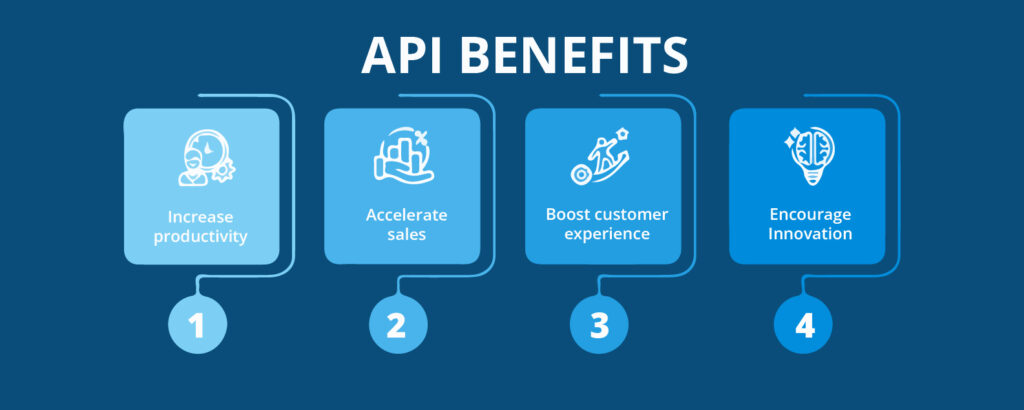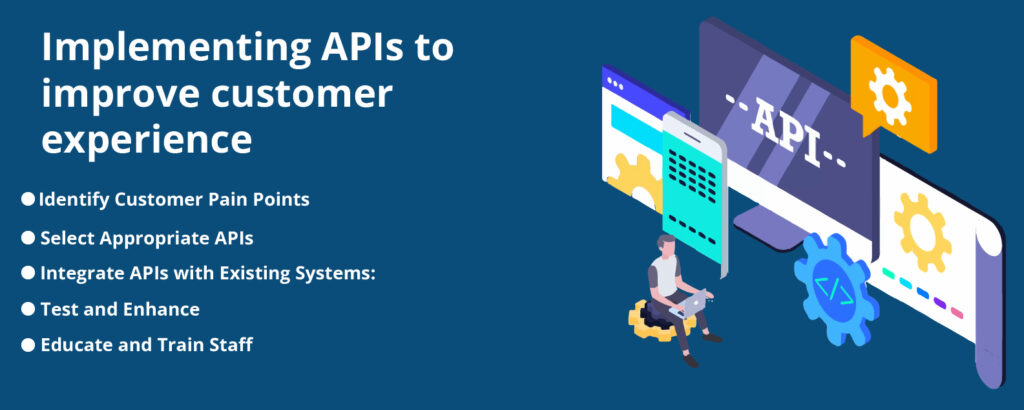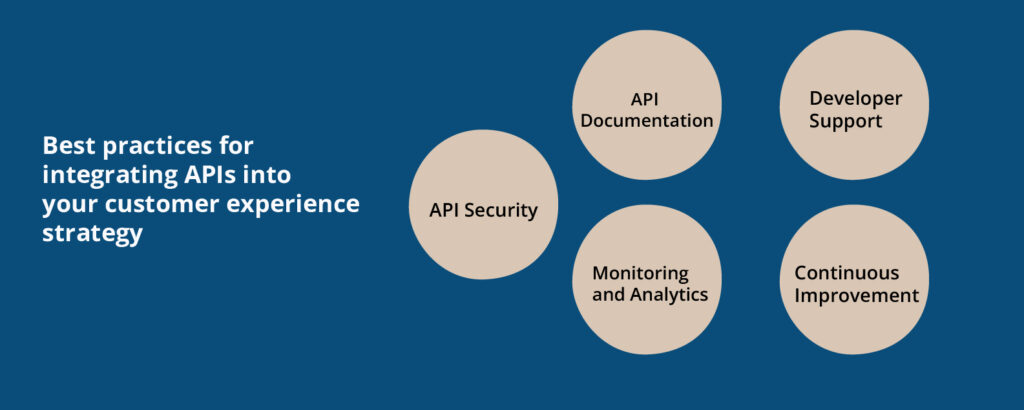
Table of Contents
ToggleThe customer experience includes all interactions, from exploration to post-purchase assistance. It entails identifying wants, preferences, and pain spots. Understanding the customer’s point of view allows organizations to adjust services and acquire insights through data, feedback analysis, and technology to Improve the Customer Experience with an API Solution.
Amazon, the worldwide e-commerce behemoth, is an excellent illustration of how APIs may be used to improve the consumer experience. The company’s usage of APIs to provide tailored suggestions has changed the way customers purchase and engage with their platform.
The significance of an API Solution in improving customer experience
APIs play an important role in improving the quality of consumer interactions. These interfaces provide effective communication and data exchange between different software systems, allowing businesses to create personalized and unified experiences for their customers. Enterprises may use APIs to enhance their operations, automate activities, and provide customers with real-time data, increasing their entire experience.

Real-World Example
Consider the renowned travel booking platform Expedia. Expedia provides a streamlined and user-friendly experience for clients wishing to book flights and other travel services. Behind the scenes, the platform depends extensively on APIs to improve the consumer experience in a variety of ways:
1. Integration with Airlines and Hotels:
Expedia uses the API Solution to connect with many airlines, hotel chains, and other travel services. Customers can now search for available flights, lodgings, and other travel services from a variety of suppliers all on the Expedia platform. The APIs enable real-time data interchange, ensuring that clients receive the most up-to-date availability and price data.
2. Real-time Pricing and Availability:
When a client searches for flights or hotel rooms, APIs connect to service providers’ systems to retrieve real-time pricing and availability data. Customers obtain reliable information and may make educated judgments based on the most recent options.
3. Notifications & Updates:
Expedia uses APIs to give consumers with real-time trip updates and alerts. Customers now receive fast notifications via the Expedia app if there is a flight delay or a change in hotel check-in time, due to APIs that communicate with the airlines’ and hotels’ systems.
4. Personalized Recommendations:
Expedia utilizes APIs to evaluate consumer booking history, preferences, and browsing behavior. With this data, the platform may provide tailored travel recommendations and offers that are relevant to the customer’s interests.
APIs serve as the foundation for Expedia’s ability to provide a consistent, user-friendly, and personalized travel booking experience. They guarantee smooth connection between the Expedia platform and different external systems, resulting in reliable information.
Benefits of Using APIs for a Better Customer Experience

Leveraging APIs provides organizations with a great tool to improve consumer experiences. APIs provide service integration, real-time data access, and tailored interactions by effortlessly linking disparate software systems.
They also make it easier to integrate third-party services, which speeds up innovation and improves scalability. This method promotes effective multi-channel engagement, giving customers a cohesive and simple experience across platforms.
Real-time Scenario
In this scenario, the banking app connects to several financial services via APIs. When you initiate a money transfer, the app uses an API Solution to interface directly with currency exchange providers, ensuring that you receive the best possible conversion rate. Another API communicates to the recipient’s bank to check the account information and initiate the transfer immediately. The entire procedure is faster, more precise, and gives you with a better exchange rate, which improves your client experience.
In this case, using APIs allows the banking app to provide improved customer service by easily integrating other services, lowering processing times, and offering lower rates, all of which lead to a smoother and more enjoyable transaction for the user.
Implementing APIs to improve the customer experience
API integration to improve the client experience requires careful strategy and implementation. The following are essential phases to consider when implementing APIs into your customer experience strategy:

- Identify customer pain points
Gain insight into the difficulties and discomforts your consumers face on their journey. This research assists in identifying places where APIs may be used to provide solutions and improve the client experience. - Choose Appropriate API
Research and select APIs that are compatible with your company aims and client requirements. When choosing API providers, consider dependability, scalability, and simplicity of integration. - Integrate APIs with Existing Systems
Ensure APIs work seamlessly with your current systems and platforms. This can need specialized programming or coordination with third-party integration expertise to guarantee a flawless implementation. - Test and Enhance
Evaluate the API integration to ensure expected functionality. Monitor and examine the API’s impact on the user experience, and make necessary changes to improve performance.
Best practices for using API Solutions in your consumer experience strategy
Including APIs in your customer interaction strategy requires careful preparation and adherence to recognized best practices. Here are some guidelines to consider:

API security
Make API security a primary concern to protect client data and prevent illegal access. Implement strong authentication and encryption techniques to protect the confidentiality and integrity of data communicated over APIs.
API docs:
Provide detailed and up-to-date documentation for developers working with your APIs. Clear documentation improves integration efforts, reducing the time and assets developers need to understand and efficiently use your APIs.
Developer Support
Provide strong developer support to those integrating your APIs. This includes providing sample code, Developing Software Kits (SDKs) and specialized support.
Track and evaluate
API performance to identify issues and opportunities for improvement. To acquire insights and make well-informed decisions, monitor API usage on a regular basis and ask consumer feedback.
Continuous Improvement
Accept that APIs and client requirements are always changing. Continuously analyze your APIs and customer service strategy to discover areas for improvement, ensuring that your products stay competitive.
Businesses that follow these best practices may ensure the smooth integration of API into their client experience strategy and leverage the benefits they deliver.
Conclusion: The Next Age of Customer Experiences
The next phase of customer experience depends on using an API Solution to create seamless, tailored interactions. Businesses have to adopt technology to keep up with escalating customer demands. APIs provide system integration, automated processes, and personalized experiences, which improve consumer journeys.
Understanding consumer wants aids in the identification of potential API-driven changes. Benefits include uniform experiences, third-party services, and process efficiency. Successful implementation needs meticulous planning, the selection of appropriate APIs, integration, and constant improvement.





